Air Canada is the flag carrier and the largest airline of Canada, by size and passengers carried. Air Canada is headquartered in the borough of Saint-Laurent, Montreal, Quebec. The airline, founded in 1937, provides scheduled and charter air transport for passengers and cargo to 222 destinations worldwide. It is a founding member of the Star Alliance. Air Canada's major hubs are at Toronto Pearson International Airport (YYZ), Montréal–Trudeau International Airport (YUL), and Vancouver International Airport (YVR).

Billy Bishop Toronto City Airport is a regional airport located on the Toronto Islands in Toronto, Ontario, Canada. It is often referred to as Toronto Island Airport and was previously known as Port George VI Island Airport and Toronto City Centre Airport. The airport's name honours Billy Bishop, the Canadian World War I flying ace and World War II Air Marshal. It is used by civil aviation, air ambulances, and regional airlines using turboprop planes. In 2022, it was ranked Canada's ninth-busiest airport.

Canadian Pacific Air Lines was a Canadian airline that operated from 1942 to 1987. It operated under the name CP Air from 1968 to 1986. Headquartered at Vancouver International Airport in Richmond, British Columbia, it served domestic Canadian as well as international routes until it was purchased by Pacific Western Airlines and absorbed into Canadian Airlines International.

The Vickers Vanguard was a short/medium-range turboprop airliner designed and produced by the British aircraft manufacturer Vickers-Armstrongs.

Winnipeg James Armstrong Richardson International Airport is an international airport located in Winnipeg, Manitoba, Canada. It is the seventh busiest airport in Canada by passenger traffic, serving 4,094,793 passengers in 2023, and the 7th busiest airport in Canada by aircraft movements. Winnipeg International Airport is a hub for Calm Air, Perimeter Airlines, and cargo airline Cargojet, also serving as a focus city for WestJet and an operating base for Flair Airlines. The airport is co-located with Canadian Forces Base Winnipeg, covering a total land area of 1,370 hectares.
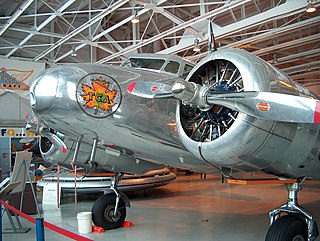
Trans-Canada Air Lines was a Canadian airline that operated as the country's flag carrier, with corporate headquarters in Montreal, Quebec. Its first president was Gordon Roy McGregor. Founded in 1937, it was renamed Air Canada in 1965.

Eastern Provincial Airways (EPA) was an airline that operated in Atlantic and eastern Canada. At its peak, the carrier operated jet service with Boeing 737-200 aircraft connecting many communities that today only have scheduled passenger flights provided by 18-seat commuter turboprop aircraft. The airline traces its history from Maritime Central Airways (MCA) from 1961. It merged with CP Air to form Canadian Pacific Air Lines in 1986.

Austin Airways was a passenger airline and freight carrier based in Timmins, Ontario, and one of the oldest in Canada.
Lethbridge Airport, previously Lethbridge County Airport, is located 4 nautical miles south southeast of Lethbridge, Alberta, Canada. It is 10–15 driving minutes from downtown Lethbridge, and has scheduled service to the city of Calgary, Alberta. The airport is classified as an airport of entry by Nav Canada and is staffed by the Canada Border Services Agency (CBSA) on a call-out basis from the Sweetgrass-Coutts Border Crossing. CBSA officers at this airport can handle general aviation aircraft only, with no more than 15 passengers. The airport hosts the biennial Lethbridge International Airshow.

Toronto Pearson International Airport is an international airport located in Mississauga, Ontario, Canada. It is the main airport serving Toronto, its metropolitan area, and the surrounding region known as the Golden Horseshoe. The airport is named in honour of Lester B. Pearson, who served as the 14th Prime Minister of Canada (1963–1968) and received the Nobel Peace Prize in 1957 for his humanitarian work in peacekeeping.
Marion AliceOrr, CM was a pioneering Canadian aviator who was the first woman to run a flying school. She served with the Air Transport Auxiliary during World War II and was awarded the Order of Canada in 1986.
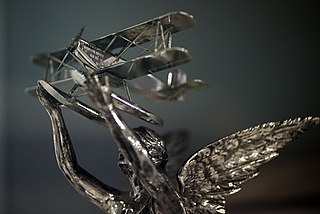
The Trans-Canada Trophy, also known as the McKee Trophy, is awarded by the Canadian Aeronautics and Space Institute to a Canadian citizen who has made an outstanding, contemporary achievement in aerospace operations, whether a single act within the year prior to the award or a sustained level of performance over a period of several years. The award was founded in 1927 by James Dalzell McKee (1893–1927) and is the oldest aviation award in Canada.
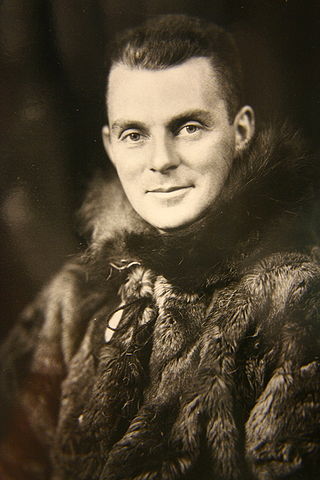
Clennell Haggerston "Punch" Dickins was a pioneering Canadian aviator and bush pilot. Northern Indigenous Canadians called him "Snow Eagle", northern Europeans called him "White Eagle", while the press dubbed him the "Flying Knight of the Northland".

Maxwell William Ward was a Canadian aviator and founder of Wardair Airlines, at one time the third-largest air carrier in Canada.

The Canadair North Star is a 1940s Canadian development, for Trans-Canada Air Lines (TCA), of the Douglas DC-4. Instead of radial piston engines used by the Douglas design, Canadair used Rolls-Royce Merlin V12 engines to achieve a higher cruising speed of 325 mph (523 km/h) compared with the 246 mph (396 km/h) of the standard DC-4. Requested by TCA in 1944, the prototype flew on 15 July 1946. The type was used by various airlines and by the Royal Canadian Air Force (RCAF). It proved to be reliable but noisy when in service through the 1950s and into the 1960s. Some examples continued to fly into the 1970s, converted to cargo aircraft.

Canadian Airways Limited was a Canadian regional passenger and freight air service based in Winnipeg, Manitoba.
Arthur Massey "Matt" Berry was a pioneering Canadian bush pilot.
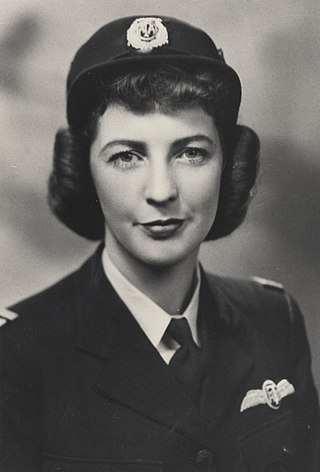
Helen Marcelle Harrison Bristol was a pioneering Canadian female civil aviation instructor and the first Canadian Air Transport Auxiliary ferry pilot during World War II.
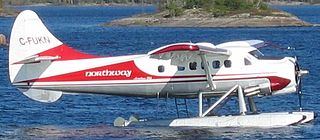
The history of aviation in Canada begins with the first manned flight in a balloon at Saint John, New Brunswick in 1840. The development of the aviation industry in Canada was shaped by the interplay of Canadian national ambitions, national and international politics, economics, and technology. Experimental aviation started in Canada with the test flights of Bell's Silver Dart in 1909, following the epochal flight of the Wright Brothers in 1903. The experimental phase gave way to use of aircraft in warfare. Many Canadians served in the British Royal Flying Corps and Royal Air Force during the First World War.
Violet Milstead Warren was a Canadian aviator, noted for being the first female Canadian bush pilot and one of only four Canadian women to work in the British Air Transport Auxiliary (ATA) during WWII. With over 600 hours of flight time during the war, she was the longest serving female Canadian ATA pilot. She worked as a flight instructor at Barker Field in Toronto, Ontario, and her students included commercial pilot Molly Reilly and author June Callwood. She is a member of the Canadian Aviation Hall of Fame, the Order of Canada, and the Bush Pilots Hall of Fame.














